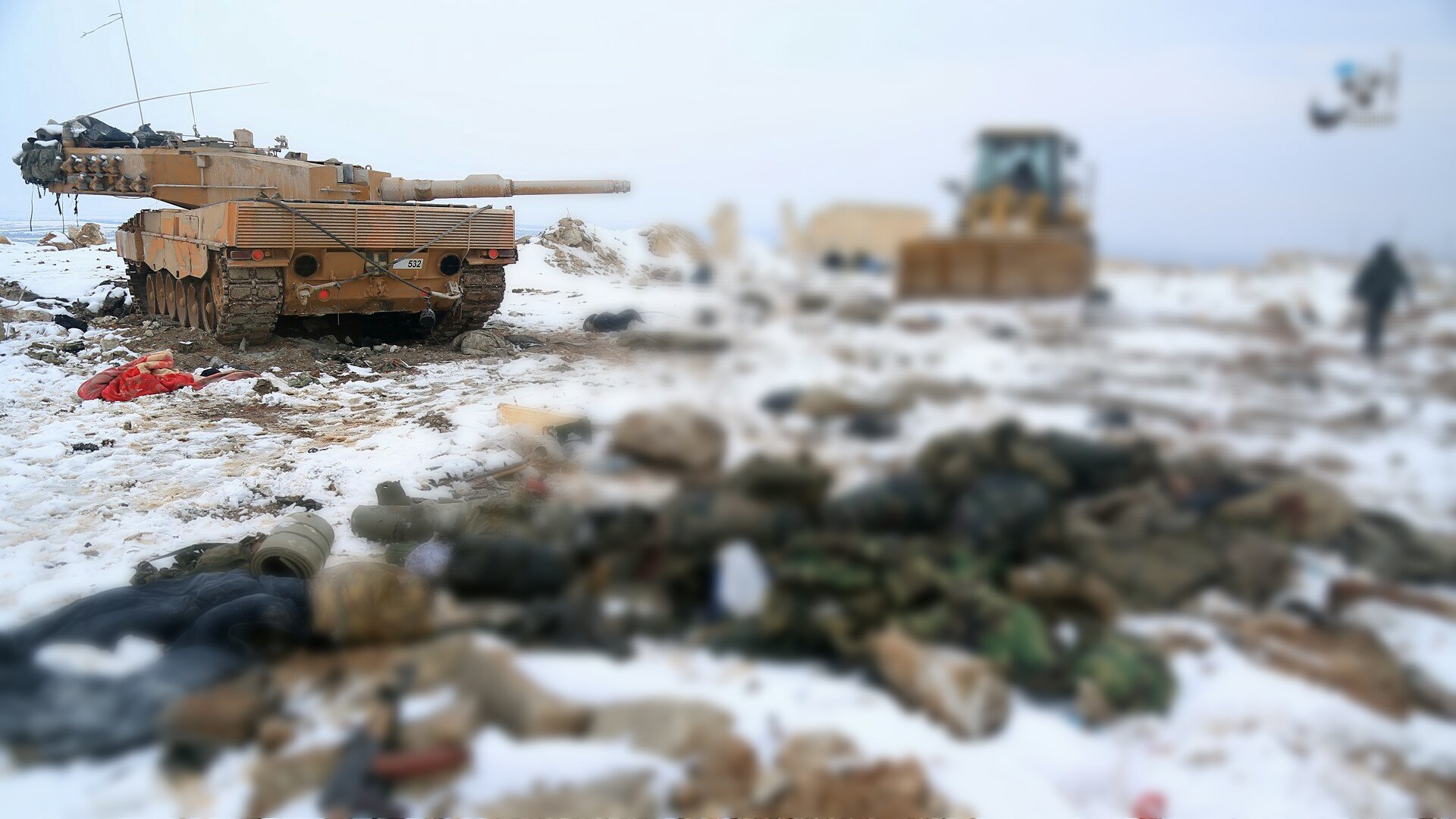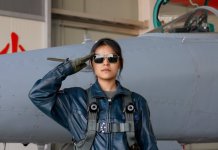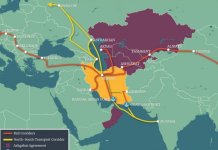The arrival of Leopard-2 tanks has been met with widespread jubilation in Ukraine. However, some Russian media report claims that these tanks are now furnished with Kontakt-1 dynamic armor protection to prepare them for combat.
China Lacks Willpower, Firepower For A ‘Two Front War’ Against India; Here Is Why PLA Will Avoid The Himalayan Conflict At All Costs
Poland delivered the first batch of Leopard-2A4 tanks to Kyiv on February 24 this year, with deliveries from other partners set to continue into the coming weeks. The 1985-vintage 2A4s are some of the oldest tanks that are currently operational.
In late March, some reports surfaced on social media suggesting that the Leopard-2A4 tanks already delivered to Kyiv were now equipped with Soviet-era ‘Kontakt-1’ or ‘Contact-1’ dynamic protection to increase their combat survivability on the battlefield.
Photographs also supplemented the claims. Although these reports have not been confirmed by the Armed Forces of Ukraine (AFU), they have recently found widespread coverage in Russian media that claims that the tank’s original armor is not powerful enough to withstand attacks by cutting-edge Russian anti-tank weapons.
A local popular Russian publication report said, “Not all combat vehicles, passing by echelons across the Polish-Ukrainian border, can be called modern and suitable for the current combat conditions.” It claims the “enemy” understands it and equips the tanks in factory conditions with better armor.
?? Armed Forces of Ukraine are installing Kontakt-1 dynamic protection on Leopard-2A4 tanks to increase survivability in combat conditions pic.twitter.com/nfYeNEDIRa
— Spriter (@Spriter99880) March 29, 2023
The German-made Leopard-2A4 is the most widespread variant of the tank, with features like an automatic fire and explosion suppression system, an all-digital fire control system capable of handling new ammunition types, and an improved turret with flat titanium/tungsten armor.
However, its armor has been questioned for its irrelevance in modern combat. This is because the armor of a tank decides its survivability in battle.

The report in Russian media claims that the armor protection of the Leopard-2A4 tank is weak and irrelevant due to its age. It argues that “it is simply impossible to design armor and, as they say, to make it in metal in a way that it will be enough for many decades to come – everything corresponds to its time.”
Serial production of this tank began in 1985 and lasted almost seven years until 1992. The report contends that the tanks have been transferred to several German allies. However, none of them dismantled the armor fillers to reveal its composition.
The Case Against German Leopard-2A4 Armor
The report claims that the armor of this vintage German-origin tank is likely composed of “ceramics and semi-active protection in the form of a steel and rubber sandwich.”
The tanks produced in the mid-1980s usually got Type B or B-tech armor protection, and later variants got the improved Type C armor or, accordingly, C-tech. However, according to Russian experts, neither of those protections can withstand attacks by modern and significantly improved firepower.
The report also cited what is referred to as a declassified British document that dwells deep into the armor characteristics of the Leopard-2 A4 tank. This document (as seen below) also did the rounds on the internet three years ago, in 2020.
Fragments of the declassified documents from British tests of Leopard 2 armor. Leo2 (in service) is most likely variants up to A4 with B tech armor. Leo2 (improved as proposed) is most likely A4 with C tech armor. pic.twitter.com/Zkycugy1wy
— Damian Ratka (@DRatka1) May 25, 2020
The data in the British assessment shows that the turret provides protection equivalent to 350mm of medium hard steel against sub-caliber projectiles and 700mm against HEAT fire when armor B (in service) is installed in the frontal portion.
The “head” with armor C generates 410–420mm from sub-caliber and 750–800mm from HEAT shells. Although it will offer slightly less resistance, the forehead of the hull can be compared to a tower. However, the Russian report says that, in any case, more will not be effective.
The report notes, “In general, the “Leopard 2A4″ without additional protection is just a case where you can hit the forehead with everything at hand, and in most cases, you won’t go wrong except very ancient anti-tank weapons and cumulative cannon shells.”
Military analyst Col. J.S Sodhi (retd) explained to EurAsian Times: The 2A4 model was designed to fight in a different battle environment, in which the armored brigades are escorted by infantry ground forces and other support vehicles with solid air support from NATO.

Being a Cold War-era product, Leopard MBTs were not meant to encounter IEDs, ATGMs, and suicide drones. The 2A4 retains an older boxy turret configuration which offers less protection from modern anti-tank missiles.
Its armor protection consists of a 420mm armor block, a light alloy hinged frame of 240mm thickness, and 80mm thick sheets of rolled homogenous armor. This exposes the turret as a weak point. This is one the main reasons these tanks have good firepower but lack adequate armor protection,” Colonel Sodhi concludes.
Earlier, there were reports that the Leopard-2A4 tanks deployed by Turkey in Syria against the Islamic State terrorists ended up being decimated in the battle against the advanced anti-tank weapons and improved explosives used by the terrorist group. Eleven tanks, three infantry (mobility) fighting vehicles, and an armored personnel carrier were reportedly damaged during the fighting in al-Bab.
A document later published online by the Islamic State showed photographic proof of the destruction of 10 Leopard tanks. Five were damaged by anti-tank missiles, two by mines or IEDs, one by rocket or mortar fire, and the others by causes that were less clear.
#ISIS ATGM hit on #Turkey Land Forces Leopard 2A4 near Al Bab #Aleppo #Syria pic.twitter.com/YBOb4Yk7WT
— Aldin ?? (@aldin_aba) December 13, 2016
An analysis published later by National Interest noted, “The 2A4 retains an older boxy turret configuration which affords less protection from modern anti-tank missiles, especially to the generally more vulnerable rear and side armor, which is a bigger problem in a counterinsurgency environment, where an attack may come from any direction.”
The development left Turkey furious, demanding Germany immediately upgrade the Cold War-era main battle tanks with new belly armor and missile protection measures. It required the addition of an Active Protection System (APS) capable of detecting an incoming projectile and initiating a countermeasure.
The report in a Russian publication argues that the Leopard-2A4 in Ukraine’s inventory may not be able to combat the Russian “tandem missiles of the Metis-M, Konkurs-M, Shturm-S complexes and guided tank missiles.”
“Also dangerous for the vehicle (especially in the forehead of the hull and with type B armor) will be contact with both the old RPG-7 grenade launchers with their PG-7VR grenades, and the more recent RPG-29 “Vampire,” RPG-27 “Meadowsweet” and exotic RPG-30 Hook.”
This is where the Contact-1 armor protection comes in. However, even that would not be foolproof.

Kontakt-1 – The Ultimate Solution?
When the tanks started arriving in Ukraine, everyone familiar with the Ukrainian tank tradition began speculating about whether Ukrainians would immediately cover all of the Leopards, Abrams, Marders, and Bradleys with explosive reactive armor modules or dynamic protection systems (DZ).
The “Contact-1” was developed in the Soviet era to improve the defense of armored vehicles against ammunition and anti-tank missiles with a cumulative payload. It was fitted on Soviet tanks like the T-55AMV, T-62MV, T-64BV, T-72B, T-80UD, and T-80U first series when it was put into service in 1985.
The “Contact-1” remote sensing system works on the principle that the explosive detonates when an explosive and a cumulative jet collide. As a result, metal plates move in its direction, cross the trajectory of the cumulative jet, scatter its energy, and cause it to become unstable, reducing the cumulative ammunition’s ability to penetrate armor by 50–80%.
Later, a more advanced DZ called the Contact-5 was also produced. However, Russian experts claim that the Ukrainians did not get access to later productions and more sophisticated protection. They cite this as a reason for the Armed Forces of Ukraine to make do with the first-generation Contact-1 DZ.
The successive, improvised variants of the Leopard-2 tanks, like the A5 and the A6 that the Germans delivered to Ukraine, have better protection than the A4 variant. However, adding dynamic protection or an ERA module on the A4 is believed to be the easiest and the fastest way to add an extra layer of resistance to these Western-grade tanks.
- Contact the author at sakshi.tiwari9555 (at) gmail.com
- Follow EurAsian Times on Google News





